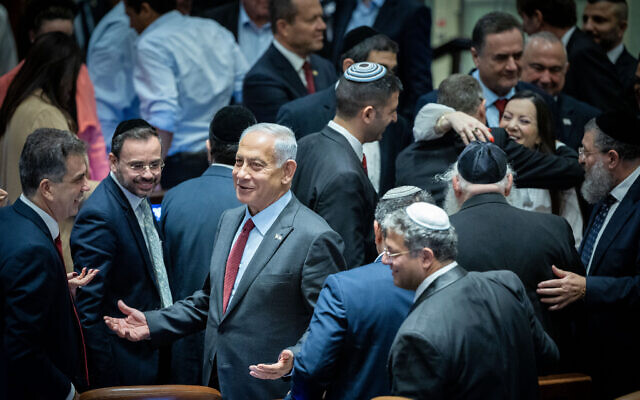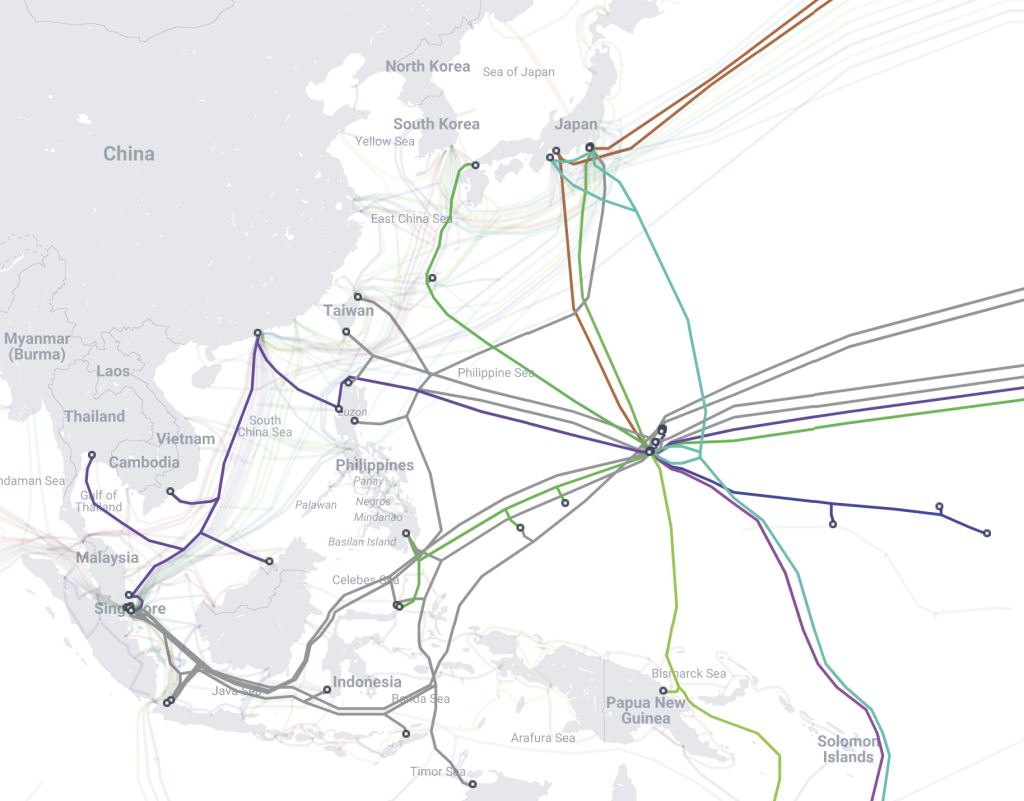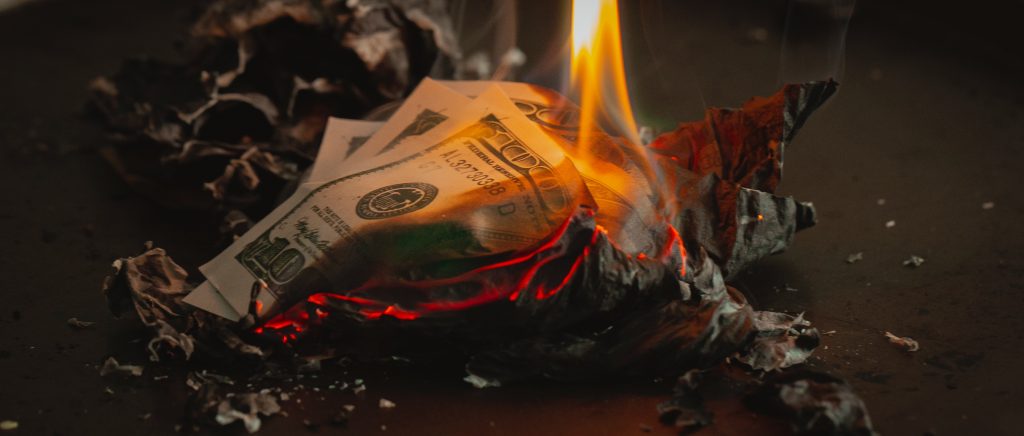China and Russia plan Eurasian dominance

‘In the face of profound domestic and international challenges, we must be calm and determined, seek stable progress and act proactively, unite and dare to fight.’[1] In March 2023, Xi Jinping spoke these words to an audience of top Chinese officials. The contrast with former leader Deng Xiaoping’s view that China should conceal strength, bide time, and ‘not claim leadership’ was stark.[2] Yet, Xi’s statement was not a repudiation of Deng’s but an indication Beijing’s geostrategy has entered a new phase.
Shortly thereafter, Xi departed to meet Vladimir Putin at the Kremlin. After then signing off on USD 165 billion of deals across 80 bilateral projects,[3] Xi lauded the partnership as driving ‘changes not seen in one hundred years.’[4] And with Russia’s European integration prospects now dashed, what started as a marriage of convenience is being consummated by new pipelines, grain terminals, and trade corridors. Until 2022, analysts claimed the Russia-China alignment carried too much baggage to succeed. But the rules of the global order are being rewritten. And when the facts change, the conclusions must follow.
The lights that failed
Politicians play the cards they’re dealt. In April 1997, a similar leaders’ meeting took place at the Kremlin. As Boris Yeltsin hosted Jiang Zemin, both jointly declared commitment to a ‘multipolar world… without hegemony’, denouncing the ‘monopolisation’ of world affairs, presumably by the United States.[5] But at the height of the ‘unipolar moment’, there was little either could do about it other than stay out of each other’s way.
Figure 1: China, Special Economic Zones.
Forgoing interior development and Central Asian expansion, China pursued a development strategy centred on export-oriented manufacturing, concentrated in its coastal Special Economic Zones.[6]
Figure 2: Post-Soviet gas fields. Source: Wikimedia Commons.
Russia, meanwhile, leveraged hydrocarbon wealth to complement Western industry, by 2009 running a dozen natural gas pipelines into Europe. In 2011, the Russo-German Nord Stream project was opened. And one decade later, Europe purchased roughly half its gas from Russia, accounting for two-fifths of Moscow’s state revenue.[7]
Figure 3: Russia-Europe pipeline network. Source: Wikimedia Commons.
Yet, this strategy of energy interdependence contradicted Moscow’s terrestrial objectives. Perceived NATO and EU encroachments on its frontiers generated tensions, especially over Ukraine. And in 2014, the overthrow of a friendly government in Kyiv prompted Moscow to annex Crimea and stoke a separatist conflict in Donbas.
Figure 4: Nord Stream. Source: Deutsche Welle.
To frustrate a potential Russian-German entente,[8] Washington sanctioned projects like Nord Stream 2, even threatening to ‘end’ them entirely.[9] In this, the US found common cause with Eastern European states fearing geopolitical marginalisation and losing terrestrial pipeline transit revenues.[10]
Figure 5: Russia-EU trade balance. Source: VoxEU.
Russia’s 2022 invasion of Ukraine saw sanctions intensify, though energy decoupling was slow to follow, causing a temporary EUR 67 billion EU-Russia trade deficit and a costly transition to American LNG.[11] But after Nord Stream was sabotaged in September 2022, Russian gas delivery fell off a cliff.
Figure 6: Nord Stream gas flows.
Conclusive evidence of the culprit is lacking. But, as the largest beneficiary, all signs point to the United States, possibly with varying degrees of cooperation from Ukraine,[12] Britain,[13] and Norway.[14] Germany and Russia, meanwhile, were the clear losers.[15] And with the West finalising its messy divorce with Russia, Moscow was now free to elope with China.
Figure 7: Daily Russian pipeline gas exports to Europe. Source: International Energy Agency.
The preceding decade had seen Moscow-Beijing ties strengthen, with Russian exports to China increasing 112 per cent. Now that European integration is infeasible, new geoeconomic projects are cementing this relationship, with Russia and China aiming for USD 200 billion in annual trade by 2024.[16]
Love rears its ugly head
Here, the first port of call is agriculture. Proposed in 2012, the New Land Grain Corridor will connect Russian grain to Chinese markets, dodging the Black Sea route and reducing China’s dependence on North American and Australian imports.[17] The project’s capital investments total USD 6.5 billion and will shift 7 million tonnes of grain annually from the Far Eastern, Ural and Siberian federal districts.
Figure 8: Major wheat exporters to China. Source: Bloomberg.
The bulk of this will cross through Grain Terminal Zabaikalsk, a railway transhipment facility bordering Inner Mongolia that began construction in 2020. In return, Beijing is expanding its vehicle exports to Russia and collaborating on aircraft and science projects.[18]
Figures 9 and 10: Russian grain-exporting districts and Grain Terminal Zabaikalsk. Source: New Land Grain Corridor.
The taproot of integration, however, is energy policy, with Chinese demand set to absorb Russian supply, plans that have been spearheaded by the Power of Siberia pipeline. Overseen by Gazprom and the China National Petroleum Corporation, Power of Siberia runs along the Chinese coast via Beijing to Shanghai. Gas delivery began in 2019, increasing by half throughout 2022. A further southern extension will begin delivery in 2025.[19]
Figure 11: Power of Siberia and Power of Siberia 2. Source: Financial Times.
Meanwhile, the Power of Siberia 2, connecting the Yamal Peninsula gasfields via Mongolia to China, will begin construction in 2024.[20] This pipeline will provide an outlet for gasfields previously serving Europe, making it a direct replacement for Nord Stream. And this is one of the main reasons Moscow is pushing Beijing to fast-track its development.[21]
All up, Russia’s Chinese gas exports are projected to hit 98 billion cubic metres by 2030, along with 100 million tonnes of LNG.[22] Moscow and Beijing are also collaborating on nuclear power development.[23] And, combined with India, China now accounts for four-fifths of Russia’s oil exports.[24]
Figure 12: Yuan vs dollar trading volumes on Moscow Exchange in 2022. Source: Reuters.
Surging bilateral trade has also accelerated dedollarisation. Cross-border transactions are increasingly settled in renminbi. By late 2022, yuan-rouble trade eclipsed dollar transactions on some days.[25] And Moscow’s turn towards ‘friendly currencies’ has seen the yuan’s share of trade leap from 1 to 45 per cent on Russian currency markets, while dollar trade halved from 80 to 40 per cent. Apart from softening Western sanctions,[26] this has bolstered Xinjiang as a cross-border settlement and financial centre.[27]
Figure 13: China’s monthly exports to Central Asia and ASEAN. Source: Goldman, Asia Times.
The partnership has also shattered taboos regarding China’s footprint in Russia’s ‘near abroad’. Beijing’s year-on-year Central Asian exports increased more than half in March 2023,[28] with the bulk related to investment in energy, minerals, and rail transport.
Figure 14: Proposed cross-Kyrgyzstan railway. Source: Silk Road Briefing.
These investments include a new railway from Kashgar to Kyrgyzstan and Uzbekistan, supplementing the Middle Corridor. Though planned since 1997, Russia only endorsed the project in 2022. And it is due for completion in 2024.[29]
Figure 15: Chinese exports to former Soviet republics. Source: Goldman, Asia Times.
Consolidating these gains, at a May 2023 meeting at Xi’an with the five Central Asian presidents, Xi Jinping unveiled a regional development plan, focusing on trade, investment, tourism, and cultural exchange.[30] Moreover, the plan is linked with security cooperation, apparently hedging against residual Turkic anxieties concerning China’s governance of Xinjiang.[31]
Figure 16: China-Central Asia pipeline. Source: South China Morning Post.
Finally, Xi also advocated fast-tracking Line D of the China-Central Asia pipeline, a project that made Kazakhstan and Turkmenistan some of China’s largest gas suppliers.[32] The combined value of both states’ Chinese trade surpassed USD 100 billion in 2022.[33]
Shotgun marriage
Alignment has even strengthened to the point where Russia and China are backing each other’s regional ambitions. Historically, Moscow mostly ignored Washington’s Asia-Pacific alliances, as they were geographically distant, focused on intelligence sharing, and had no equivalent of NATO’s Article 5.[34]
Figure 17: US Pacific alliance arrangements: Five Eyes (red), AUKUS (green), ANZUS (blue [US-NZ obligations are suspended]), the Quad (orange).
The AUKUS alliance, however, is different. The USD 370 billion program to arm Australia with nuclear-powered submarines is ostensibly aimed at China. Yet, Moscow opposes the pact as part of Western efforts to encircle Eurasia via interlocking groupings like NATO, ANZUS, Five Eyes, and the Quad. To this end, China and Russia have responded with their own alphabet soup arrangements, including BRICS, the RCEP, and the SCO.[35]
Figure 18: Polar Silk Road. Source: Economist.
Beijing, meanwhile, is piggybacking its Arctic ambitions onto Russia, which boasts substantial ports and other assets in the Artic Circle. The IPCC currently predicts the North Pole will be ice-free by 2050, raising questions over seabed resources, including oil, gas, and uranium.
For China, this also means new sea lanes, potentially halving shipping times. To avoid being frozen out, in 2017, Beijing unveiled a ‘Polar Silk Road’ proposal, seeking greater efficiency for its maritime trade.[36] It has also expanded its ice-breaker fleet, now in the global top five.[37]
Figure 19: Countries by icebreaker fleet size. Russia’s supremacy is quite clear.
But there are still flies in the ointment. Though geopolitics is tying Russia and China together, there have been minimal soft power inroads. China’s cultural and media influence in Russia remains lowkey. And though Russian coverage of China is generally favourable, the lack of genuine influence means warm relations could quickly chill should the bilateral relationship deteriorate.[38]
Such tensions could emerge over Chinese inroads into Central Asia or its increasing influence over Vladivostok. A new bilateral deal, effective from 1 June 2023, seeks to promote development in Jilin province by allowing goods bound for Zhejiang to pass through Vladivostok tariff-free. But Chinese nationalists have long coveted the city, annexed by an ‘unequal treaty’ in 1858.[39] And should the region’s demographic and economic scales tip further towards China, this could stoke Russian anxieties about irredentism.[40] For the moment, though, each side is content to burn that bridge when they come to it.
Russia’s European aspirations are dead. But its Asian aspirations have been given new life. Its partnership of convenience with China is evolving into one of necessity. And like all healthy marriages, it has been enabled by strategic concessions, especially in Central Asia and the far east. Though some may deride Russia as China’s junior partner, its massive size, resource wealth, and nuclear arsenal allow it to retain its policy autonomy. And upholding this status means turning away from a Western bloc it deems ‘agreement-incapable’,[41] and towards a partner that shares its transactional view of diplomacy. Because since politics is the world’s second-oldest profession, it closely resembles the first.
Notes:
[1] Xi Jinping (President, People’s Republic of China), quoted in Zhong Yin, ‘Respond calmly and win new and greater victories’, People’s Daily (translated by Hunter Zhu, 7 March 2023) http://paper.people.com.cn/rmrb/html/2023-03/07/nw.D110000renmrb_20230307_3-02.htm.
[2] In China, leadership functions are spread across several different roles. The ‘paramount leader’ is understood to be the person who has the most overall influence within the Party. For instance, Deng was never General Secretary of the CPC or President of the PRC, though he was undoubtedly China’s paramount leader from 1978 to 1989.
[3] It was actually Russian Prime Minister, Mikhail Mishustin, who signed off on the projects with Xi. See Ben Amis, ‘Russia and China sign off $165bn of energy and transport deals in Xi’s second day in Moscow’, BNE Intellinews (21 March 2023) https://www.intellinews.com/russia-and-china-sign-off-165bn-of-energy-and-transport-deals-in-xi-s-second-day-in-moscow-273546/?source=russia.
[4] Xi Jinping, quoted in Al-Jazeera, ‘China’s Xi tells Putin of “changes not seen for 100 years”‘ (22 March 2023) https://www.aljazeera.com/news/2023/3/22/xi-tells-putin-of-changes-not-seen-for-100. Full quote: ‘Right now there are changes – the likes of which we haven’t seen for 100 years – and we are the ones driving these changes together… take care, please, dear friend.’
[5] The United States was not mentioned by name. But given the way the document is worded and the context in which it was issued, it was undoubtedly referring to American unipolarity.
See ‘Russian-Chinese Joint Declaration on a Multipolar World and the Establishment of a New International Order’ (pronouncement, 23 April 1997) text: http://www.lawinfochina.com/display.aspx?id=7131&lib=tax&SearchKeyword=&SearchCKeyword=.
See also CNN, ‘China, Russia sign pact’ (23 Aprill 1997) http://edition.cnn.com/WORLD/9704/23/russia.china/,
And Associated Press ‘Russia: Chinese president Jiang Zemin meets president Boris Yeltsin’ (archive video, 22 July 2015) https://youtu.be/8U4bbSpL2vg.
[6] The Special Economic Zones were originally implemented in the 1980s, but China’s maritime export economy didn’t really begin to take off until the 1990s.
[7] International Energy Agency, ‘How Europe can cut natural gas imports from Russia significantly within a year’ (release, 3 March 2022) https://www.iea.org/news/how-europe-can-cut-natural-gas-imports-from-russia-significantly-within-a-year.
See also GeoHistory, ‘A guide to Russia’s resources’ (webpage, accessed 5 May 2023) https://geohistory.today/resource-extraction-export-russia/.
[8] Friedman, George, ‘Europe: Destined for conflict?’ (speech, 5 February 2015) https://youtu.be/QeLu_yyz3tc?t=3213: ‘The primordial interest of the US, over which for a century we have fought wars — the First, Second, and Cold War — has been the relationship between Germany and Russia. Because united, they are the only force that could threaten us – and to make sure that doesn’t happen.’
[9] Obviously, this was a bipartisan concern shared by the Obama, Trump, and Biden Administrations. See Radio Free Europe, ‘Pompeo Says U.S. will “do everything” to stop Nord Stream 2 project’ (30 July 2020) https://www.rferl.org/a/pompeo-u-s-will-do-everything-to-stop-nord-stream-2/30757543.html.
See also Joe Biden (United States President) and Olaf Scholz (Chancellor of Germany) press conference, C-SPAN (8 February 2022) https://youtu.be/OS4O8rGRLf8.
[10] Woodruff Swan, Betsy, Alexander Ward, and Andrew Desiderio, ‘U.S. urges Ukraine to stay quiet on Russian pipeline’, Politico (20 July 2021) https://www.politico.com/news/2021/07/20/us-ukraine-russia-pipeline-500334.
Naftogaz, ‘Naftogaz initiates new arbitration proceeding against Gazprom’ (9 September 2022) https://www.naftogaz.com/en/news/new-arbitration-proceeding-against-gazprom.
For more on pipeline transit fees, see America Hernandez, ‘Russian gas flows across Ukraine jeopardized in transit fee spat’, Politico (28 September 2022) https://www.politico.eu/article/russian-gas-across-ukraine-jeopardized/.
[11] Di Comite, Francesco and Paolo Pasimeni, ‘Tracking the EU decoupling from Russia’, VoxEU (14 April 2023) https://cepr.org/voxeu/columns/tracking-eu-decoupling-russia.
[12] Harris, Shane and Souad Mekhennet, ‘U.S. had intelligence of detailed Ukrainian plan to attack Nord Stream pipeline’, Washington Post (6 June 2023) https://archive.is/20230607064325/https://www.washingtonpost.com/national-security/2023/06/06/nord-stream-pipeline-explosion-ukraine-russia/#selection-811.0-811.79.
[13] Royal Navy, ‘Royal Navy divers train Ukrainians to hunt for mines with underwater drones’ (release, 26 August 2022) https://www.royalnavy.mod.uk/news-and-latest-activity/news/2022/august/26/20220826-royal-navy-divers-train-ukrainians-to-hunt-for-mines-with-underwater-drones.
[14] Hersh, Seymour, ‘How America took out the Nord Stream pipeline’ (8 February 2023) https://seymourhersh.substack.com/p/how-america-took-out-the-nord-stream.
[15] Sorge, Petra, ‘Germany warns of industry shutdown if Russian gas stops flowing’, Bloomberg (12 June 2023) https://archive.is/20230614230413/https://www.bloomberg.com/news/articles/2023-06-12/germany-warns-of-industry-shutdown-if-russian-gas-stops-flowing#xj4y7vzkg.
[16] Global Times, ‘China, Russia eye trade boom, expected to achieve $200b trade target ahead of schedule’ (22 March 2023) https://www.globaltimes.cn/page/202303/1287717.shtml.
[17] Pao, Jeff, ‘China, Russia to accelerate grain corridor project’, Asia Times (13 May 2023) https://asiatimes.com/2023/05/china-russia-to-accelerate-grain-corridor-project/.
The source of maps and some additional information is New Land Grain Corridor (website, accessed 13 May 2023) https://www.nlgc.ru/en/.
[18] Pao (13/5/23).
[19] Cheung, Evelyn, ‘This map shows the massive gas pipeline that Russia and China are building’ CNBC (26 July 2022) https://archive.is/20221030125355/https://www.cnbc.com/2022/07/27/map-of-power-of-siberia-gas-pipeline-that-china-russia-are-working-on.html#selection-975.0-975.74.
[20] Sheppard, David, Neil Hume, and Tom Mitchell, ‘Mongolia says Russia-China gas pipeline will break ground in 2024’, Financial Times (17 July 2022) https://archive.is/20220718170715/https://www.ft.com/content/f0080bf6-5e7d-44be-871f-a5d44dccf5c5#selection-1489.0-1489.65.
[21] Stognei, Anastasia, Joe Leahy, and Yuan Yang, ‘Power of Siberia: China keeps Putin waiting on gas pipeline’, Financial Times (25 May 2023) https://archive.is/20230525091524/https://www.ft.com/content/541f8bcb-118a-419e-869f-3273fcc9ce92#selection-1459.0-1459.59.
[22] President of Russia, ‘Russian-Chinese talks’ (release, 21 March 2023) http://en.kremlin.ru/events/president/news/70748#sel=5:13:MVx,5:27:HQj;5:46:S3S,5:57:y4F;20:1:G3l,20:64:8y3;22:13:5rj,22:25:kkj;23:1:Hlr,23:27:loy;24:25:Zqs,24:40:Pjy;25:1:Lrr,25:13:3kr;25:16:ly2,25:35:vlx;25:44:3xy,25:58:8j1;26:1:Z24,26:20:DOj;24:43:1jx,24:50:ym3;27:9:63r,27:18:vjj;27:22:32F,27:33:Uu3;28:1:Wrj,28:14:yry;31:1:W2,31:2:2W;30:27:o2,30:28:2o;31:17:Elx,31:41:rjj;34:17:3ox,34:31:yjj;38:74:VFR,38:76:RFV;45:33:yqm,45:35:mqy;45:16:3y3,45:22:F3x;45:38:yFv,45:40:vFy.
[23] Cheung.
[24] Wilson, Tom, ‘Russian oil exports hit post-invasion high’, Financial Times (16 May 2023) https://archive.is/20230516093357/https://www.ft.com/content/525f042c-d35d-4dac-aaed-c5fbf0d6bbd2.
[25] President of Russia, ‘Russian-Chinese talks’.
[26] Fabrichnaya, Elena, and Samuel Shen, ‘The yuan’s the new dollar as Russia rides to the redback’, Reuters (29 November 2022) https://archive.is/20221203020443/https://www.reuters.com/markets/currencies/yuans-new-dollar-russia-rides-redback-2022-11-28/#selection-439.0-439.56.
[27] Shakil, F.M., ‘By the numbers: The de-dollarization of global trade’, The Cradle (13 January 2023) https://thecradle.co/article-view/20279.
[28] Goldman, David, ‘China’s exports shifting from West to Global South’, Asia Times (25 April 2023) https://asiatimes.com/2023/04/chinas-exports-shifting-from-west-to-global-south/.
[29] BNE Intellinews, ‘Xi presents grand development plan for Central Asia’ (21 May 2023) https://www.intellinews.com/xi-presents-grand-development-plan-for-central-asia-279308/.
[30] Xu Wei, ‘Highlights from Xi’an summit’, China Daily (20 May 2023) https://www.chinadaily.com.cn/a/202305/20/WS6468013aa310b6054fad414f.html.
[31] BNE Intellinews (21/5/23).
[32] South China Morning Post, ‘The Central Asian Gas Pipeline: A visual explainer’ (accessed 23 May 2023) https://multimedia.scmp.com/news/china/article/One-Belt-One-Road/gasPipeline.html.
[33] BNE Intellinews (21/5/23).
[34] Security Treaty between Australia, New Zealand, and the United States of America (1 September 1951).
The ANZUS Treaty‘s collective defence clause (Article IV) is far weaker than Article 5 of the North Atlantic Treaty: ‘Each Party recognizes that an armed attack in the Pacific Area on any of the Parties would be dangerous to its own peace and safety and declares that it would act to meet the common danger in accordance with its constitutional processes.’
Moreover, the ANZUS Treaty‘s Article V states that the treaty only covers ‘island territories’ and ‘armed forces, public vessels or aircraft in the Pacific.’ This means that an attack on Australian or American interests in the Indian Ocean would not be covered by the Treaty.
Text: https://en.wikisource.org/wiki/Australia,_New_Zealand,_United_States_Security_Treaty.
[35] Yanovsky, Oleg, ‘Why does Russia care about AUKUS?’, The Diplomat (29 April 2023) https://archive.is/YywG4.
[36] Yeh, Nadya, ‘China’s Arctic ambitions and Russian ties stoke NATO fears’, China Project (25 April 2023) https://thechinaproject.com/2023/04/25/chinas-arctic-ambitions-and-russian-ties-stoke-nato-fears/.
[37] Bochove, Danielle, Marie Patino, and Harley Warren, ‘Russia’s next standoff with the West lies in the resource-rich Arctic’, Bloomberg (5 May 2023) https://archive.is/20230505042110/https://www.bloomberg.com/graphics/2023-owns-north-pole-artic-sea-bed-claims/ (alt) https://webcache.googleusercontent.com/search?q=cache:https%3A%2F%2Fwww.bloomberg.com%2Fgraphics%2F2023-owns-north-pole-artic-sea-bed-claims%2F%3FleadSource%3Duverify%2520wall&leadSource=uverify%20wall.
[38] Soboleva, Elena, ‘How does China engage with Russia’s media market?’, The Diplomat (2 May 2023) https://archive.is/20230502161040/https://thediplomat.com/2023/05/how-does-china-engage-with-russias-media-market/#selection-1117.0-1117.14.
[39] The ‘unequal treaties’ were a series of treaties signed during China’s ‘century of humiliation’, a period of relative geopolitical weakness. Consequently, the treaties granted concessions that, in the modern context, are seen as incommensurate with China’s status as a great power. Thus, Chinese nationalists harbour a desire to reverse the setbacks these treaties imposed on China.
[40] Pao, Jeff, ‘China’s Jilin to ship goods via Vladivostok’, Asia Times (17 May 2023) https://asiatimes.com/2023/05/chinas-jilin-to-ship-goods-via-vladivostok/.
[41] Lavrov, Sergei (Foreign Minister, Russia) quoted in TASS, ‘Лавров заявил, что западные страны недоговороспособны и эгоисты до мозга костей’ (25 September 2022) https://tass.ru/politika/15859275.



Your article helped me a lot, is there any more related content? Thanks!